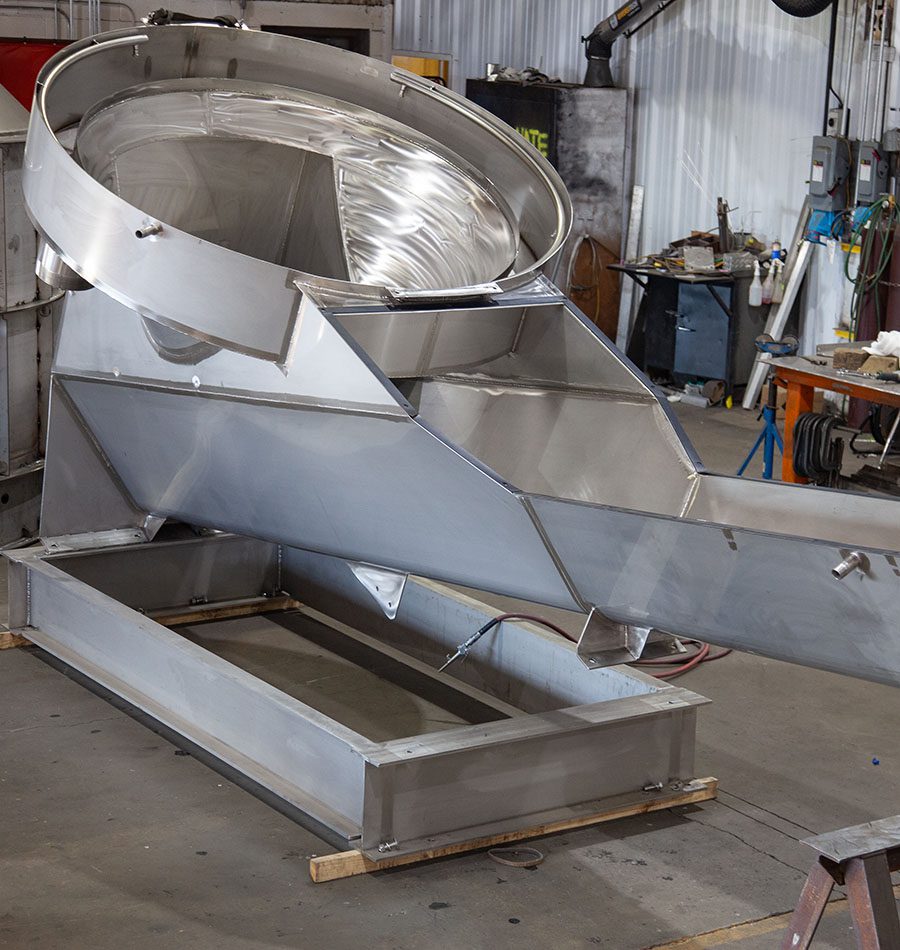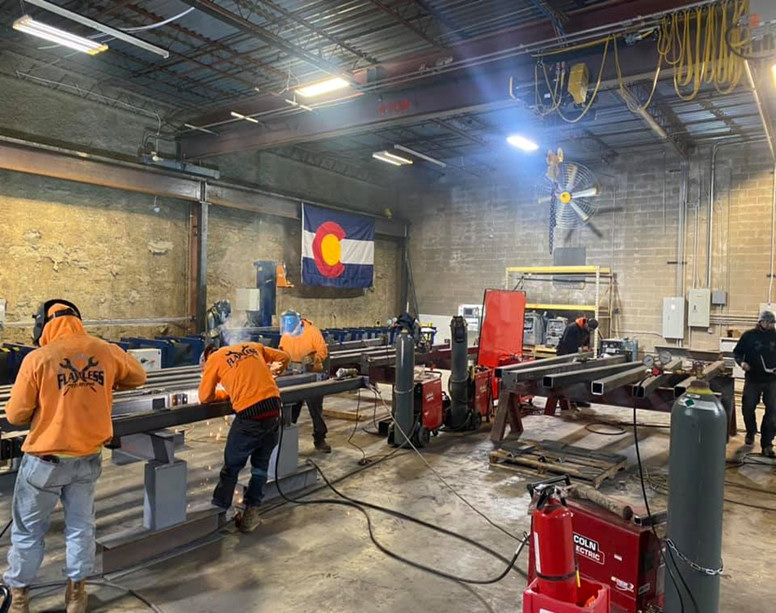Steel Fabrication Melbourne: Craftsmanship Fulfills Development
Steel Fabrication Melbourne: Craftsmanship Fulfills Development
Blog Article
Comprehensive Evaluation of Cutting-Edge Techniques in Steel Construction Industry
As the steel manufacture market continues to progress, the integration of cutting-edge methods has actually ended up being crucial for remaining competitive and satisfying the needs of contemporary production requirements. From laser reducing innovations to the usage of robotics and 3D printing in steel production, the landscape of fabrication strategies is rapidly changing. With each technology bringing its own collection of benefits and difficulties, a detailed analysis of these techniques is vital for companies intending to simplify their processes, improve accuracy, and ultimately, raise the top quality of their steel fabrication outcome. In this vibrant market where modern technology plays a pivotal duty, comprehending the nuances of these innovative methods is not simply an option however a need for those wanting to build ahead in the ever-evolving globe of steel construction.
Laser Reducing Advancements
In the world of steel manufacture, laser reducing innovations have transformed the precision and efficiency of steel shaping procedures. By utilizing the power of concentrated laser beams, suppliers can currently attain unparalleled degrees of precision when puncturing different types of metals. This modern technology enables complex styles to be performed with minimal product wastefulness, making it a cost-effective option for markets needing high precision parts.
Among the essential advantages of laser cutting is its ability to deal with a large array of products, consisting of stainless steel, light weight aluminum, and carbon steel, effortlessly. The process creates tidy, burr-free sides, getting rid of the demand for added ending up actions. The non-contact nature of laser reducing minimizes the risk of product contamination, resulting in higher quality end items.
Moreover, laser reducing machines can be configured to make swift, exact cuts, dramatically decreasing manufacturing time contrasted to standard cutting techniques. This speed and precision make laser reducing specifically appropriate for mass manufacturing environments where performance is critical. As modern technology continues to breakthrough, laser cutting is poised to play a significantly important function in the steel manufacture sector.

CNC Machining Innovations
The advancement of CNC machining technologies has introduced a brand-new age of precision and effectiveness in the steel manufacture market. Computer Numerical Control (CNC) machines have actually revolutionized steel fabrication by providing unequaled accuracy and repeatability in the production process. steel fabricators melbourne. One of the crucial developments in CNC machining is the integration of advanced software application systems that allow real-time surveillance and adjustments, bring about improved productivity and top quality control
Additionally, the development of multi-axis CNC makers has allowed for the fabrication of complex steel components with intricate styles that were previously challenging to produce. These makers can perform a vast array of machining operations, including milling, boring, transforming, and grinding, all with high levels of accuracy.
Furthermore, the unification of automation and robotics in CNC machining has streamlined manufacturing procedures, lowered preparations, and decreased the margin of error. This combination of innovative technologies not just enhances effectiveness but additionally makes certain constant quality across all produced steel parts. In conclusion, CNC machining developments continue to drive advancements in the steel manufacture industry, setting new requirements for accuracy and efficiency.
Automated Welding Technologies
Automated welding innovations have revolutionized the steel manufacture industry, boosting performance and precision in the welding process. These innovative innovations use computer-controlled systems to automate the welding process, bring about greater productivity degrees and boosted weld high quality. Among the essential benefits of automated welding is the capacity to do complex welds with regular precision, minimizing the probability of mistakes and rework.
Robot welding systems are at the leading edge of automated welding innovations, supplying exceptional rate and precision. These systems can handle a large range of welding jobs, from simple to detailed, easily (steel fabricators melbourne). By making use of sophisticated sensing units and software, robot welders can adjust to variants in material and joint geometry, making sure an uniform and dependable weld
In addition, automated welding innovations boost workplace safety by reducing the direct exposure of human welders to harmful fumes and intense heat. As the steel manufacture sector proceeds to develop, including automated welding address technologies will be vital for firms looking to stay affordable and satisfy the growing demands for high-grade bonded items.
Robotics Combination in Construction
Making use of robot systems in manufacture procedures has come to be an essential technique for enhancing effectiveness and accuracy in contemporary production settings. Robotics assimilation in steel construction uses a myriad of advantages, consisting of raised performance, boosted quality assurance, and improved security procedures. These innovative robot systems are equipped with innovative sensors and shows capacities, permitting them to perform complex jobs with a high degree of precision and repeatability.
One of the essential advantages of robotics combination in steel construction is the capability to automate repetitive jobs, such as product handling, cutting, welding, and assembly processes. This not just speeds up manufacturing cycles but likewise minimizes the danger of human mistake, leading to greater total product high quality. Furthermore, robots can operate 24/7, significantly enhancing production outcome and meeting limited project target dates.

3D Printing in Steel Manufacturing
Having actually reinvented the steel construction industry with robotics combination, the expanding exploration of 3D printing anchor in steel production is poised to further development the world of modern manufacturing methods. 3D printing, also referred to as additive manufacturing, uses unmatched design flexibility and complexity, making it possible for the production of intricate steel frameworks that were formerly unattainable via conventional production methods. By utilizing computer-aided layout (CAD) software, makers can exactly control the layer-by-layer deposition of steel material, leading to components with enhanced functionalities and geometries.
Among the vital advantages of 3D printing in steel manufacturing is its capacity to reduce material waste substantially. Unlike subtractive production processes where excess material is trimmed away, 3D printing just utilizes the needed quantity of steel required for the final component. This performance not just results in set you back savings however additionally lines up with sustainable production methods by minimizing ecological effect.
Moreover, 3D printing allows rapid prototyping and modification, permitting for the production of little sets of intricate steel parts with brief preparations. As the modern technology remains to mature and become more available, its integration into mainstream steel fabrication processes is anticipated to drive development and performance across the industry.
Final Thought
To conclude, the steel fabrication sector has seen significant developments in methods such as laser cutting, CNC machining, automated welding, robotics assimilation, and 3D printing. These advanced modern technologies have revolutionized the means steel items are manufactured, resulting in raised accuracy, cost-effectiveness, and performance. Continued investment in these innovative techniques is essential for the industry to stay competitive and satisfy the needs of modern-day manufacturing procedures.
As the steel fabrication market proceeds to develop, the assimilation of advanced methods has come to be important for remaining competitive and meeting the demands of modern manufacturing requirements.One of the essential benefits of laser cutting is its capacity to manage a broad range of materials, including stainless steel, light weight aluminum, and carbon steel, with ease.Automated welding innovations have actually revolutionized the steel construction sector, enhancing efficiency and accuracy in the welding process.Having actually reinvented the steel construction industry look at this website through robotics integration, the blossoming expedition of 3D printing in steel production is poised to more development the world of modern-day production strategies.In final thought, the steel fabrication industry has seen substantial innovations in techniques such as laser cutting, CNC machining, automated welding, robotics combination, and 3D printing.
Report this page